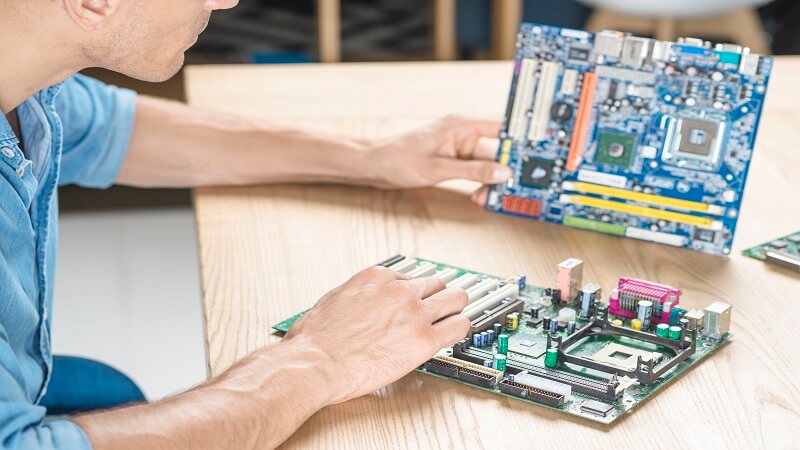First of all, in electronics, turning a conceptualized circuit design into a physical, working prototype is essential. Before mass production, designers and engineers can test their concepts, solve problems, and improve their designs by creating a printed circuit board pcbasic prototype PCB Assembly. This article provides a thorough how-to guide for creating a printed circuit board prototype, breaking down the sequential steps required to turn an idea into a working prototype.
Specify Your Needs for the Design:
It is crucial to specify the precise needs of your design before beginning the complex process of PCB prototyping. Describe the intended performance characteristics, size restrictions, and functionality. This first stage acts as a guide for the whole prototype process.
Produce a Diagrammatic Design:
Select the Software for PCB Design:
To make a schematic diagram, use PCB design software like Eagle, KiCad, or Altium. Determining the electrical connections and parts that will make up your circuit is the task of this step.
Insert Connectors and Components:
Add the necessary connectors, electronic parts, and other components to the schematic. Ensure your circuit’s desired functionality is appropriately depicted in your schematic.
Design of PCB Layout:
Schematic Transfer to PCB Layout:
After completing the schematic, move it to the software’s PCB layout design interface. Component placement and trace routing definition are part of this process on the PCB.
Component Placement Optimization:
Organize parts to maximize space usage and enable effective trace routing. During this stage, consider elements like signal integrity, heat control, and ease of assembly.
Path Traces:
Create traces connecting the different PCB components using the software’s routing tools. Keep an eye out for signal routes to prevent interference and crosstalk.
Manufacturing the Circuit Board Prototype:
Choose the Manufacturing Process for PCBs:
Select a PCB prototype production method that works for you. Traditional etching technologies and more contemporary procedures like PCB milling or fast prototyping services are available as options.
Produce Gerber Files:
Get the Gerber files out of the PCB design program. The data in these files is what the PCB maker needs to make the actual board.
Select PCB Components:
Make the right material selections for your prototype. FR-4 fiberglass is a common choice for stiff boards, and polyimide or another flexible material works well for flexible PCBs.
Send Documents to a Manufacturer of PCBs:
Contact a PCB maker with the Gerber files or use online prototyping services. Select a company that can quickly produce prototypes that meet your requirements.
Soldering and Component Placement:
Compile the Parts:
Gather the electronic parts that are required for your prototype. Make sure they adhere to the guidelines provided in your design.
Arrange the PCB’s components:
Place each component on the PCB carefully, ensuring it is positioned in the appropriate places according to the layout.
Soldering:
Apply soldering techniques to the PCB to firmly attach the components. For dependable electrical connections, make sure the solder joints are correct.
Turn on the Prototype Power:
Give the PCB prototype power, then check that it works. Utilize oscilloscopes, multimeters, and other testing tools to ensure the circuit operates as it should.
Recognize and Handle Problems:
If any problems or malfunctions are found during testing, find the underlying reasons and use debugging to fix them. This could entail redoing solder joints, rearranging component locations, or altering the design.
Refine and Iterate:
Get Input:
Ask coworkers, stakeholders, or possible users for their opinions. Please take into account their suggestions to find areas that need work.
Make Adjustments Iteratively:
Iteratively alter the design in response to user feedback and test findings. This could entail tweaking the circuit’s layout, changing the component values, or performing performance optimization on the circuit.
Continue the Cycle of Prototyping:
Reproduce the complete prototyping cycle with revised designs to attain the desired functionality and performance.
Conclusion
In conclusion, designing a pcbasicpcba manufacturer requires meticulous planning, in-depth design knowledge, and iterative improvement. Designers and engineers may successfully negotiate the challenges of PCB prototyping using this thorough guide, enabling them to transform their creative ideas into actual, practical realities. Prototyping is an essential stage towards the effective mass production of electronic devices and a means of validating the design.
